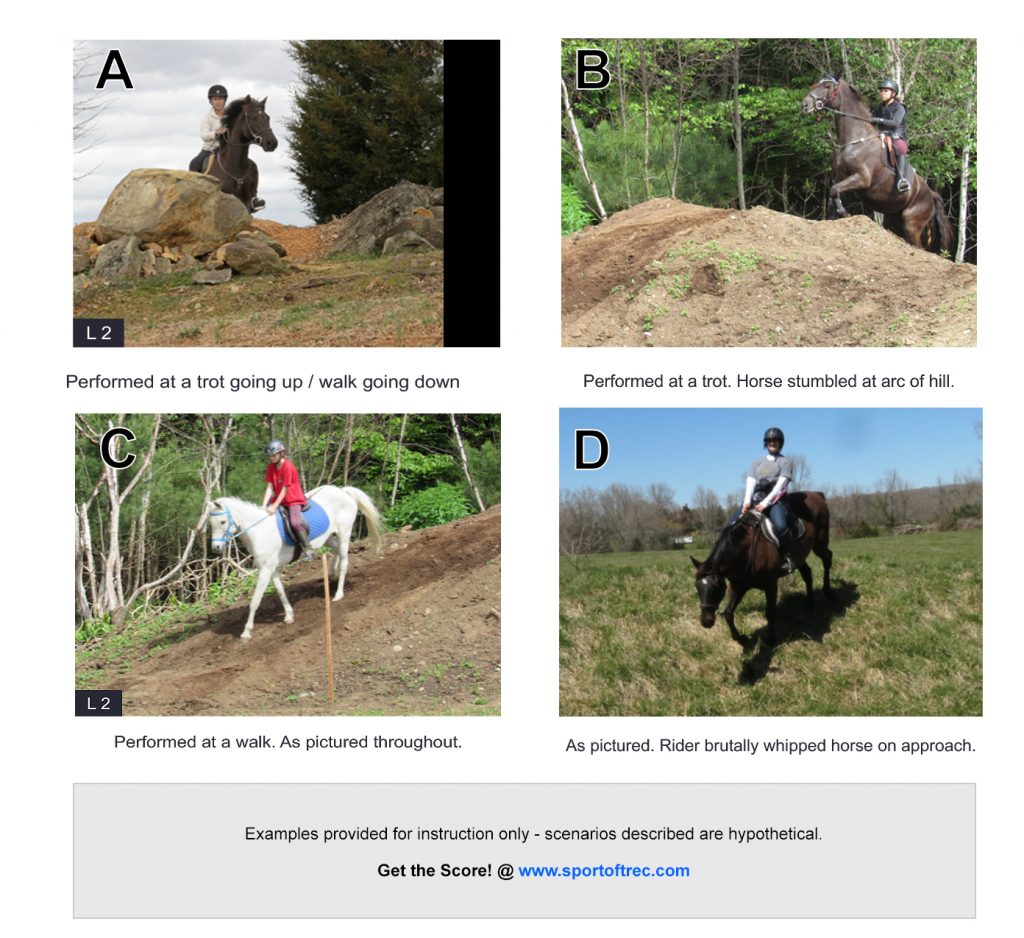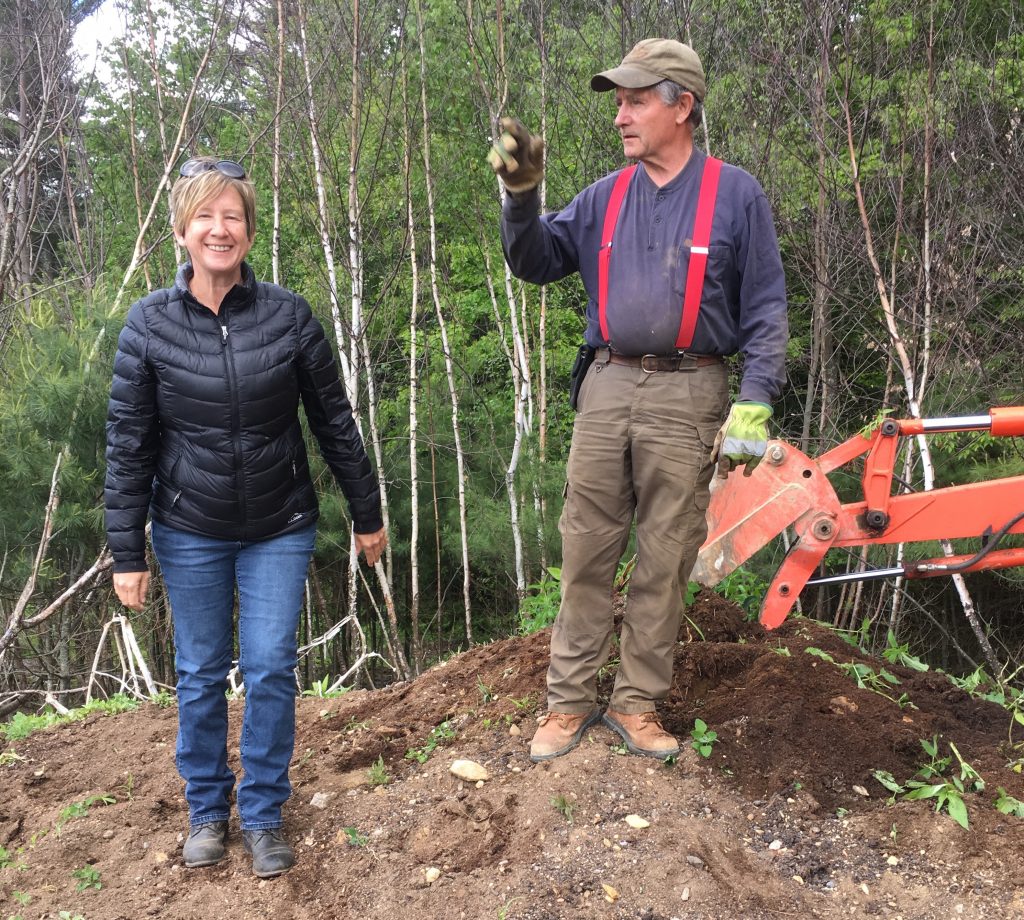
Description
In TREC a Bank is an UP-DOWN landform, with slopes of 30° to 45° marked by flags entrance and exit gates, and corridor marked on the ground. Width of the corridor: 2- 4 meters. Length of each slope: 5 – 6 meters.
Objective
Showing the horse’s correct balance and the correct posture of the rider while keeping to the initially chosen gait.
Scoring This Obstacle
See also: Ridden Obstacles / Scoring
Effectiveness Faults (E Score) -3 per incident
BEFORE the obstacle:
– Running Out
– Error of Course Corrected
– Stepping Back
– Refusal
– Circling
IN the obstacle:
– Break of Gait
– Other / Obstacle Specific
Style Faults (S Score) -1 per incident.
– Irregular Forward Motion
– Incorrect Rider Position, Not Over the Stirrups and Light
– Loss of Balance of the Horse or the Rider
– Incorrect Rider Aids
– Horse Moving Sideways
– Rider Not Looking Forward
– Rider Interfering With Horse’s Balance
Penalties (P Score)
– Brutality (-5)
– Dangerous Riding (-5)
– Fall of Horse or Rider (Rider Excused)
– Leaving The Obstacle (-10)
– Other Obstacle Specific Penalties
Get The Score!
Rate these performances to test your knowledge of TREC Rules and Scoring.
2020 Ridden TREC Obstacle Specs and Scoresheets – USA

– Scroll to the bottom of the page for Judge’s Scorecard –

© Stephanie Frend
Obstacle Building Tips: Bank and Inclines.
Tim Thomas (r) course designer / USA. www.thomasearthworks.com
Of course, if you have a natural land feature available – use it. Footing and ground condition are the primary concerns. Things to consider: roots, rocks, and soil type. Additionally, you will want to check the grade and modify as necessary to create a consistent slope.
If building this feature, consider hiring a course designer and/or consulting with an agronomist or local farmer to understand local soil characteristics and weather conditions. It is important that the slope be compacted during construction, and allowed to settle. Planting grass is highly recommended to avoid erosion, and provide good footing for the horse. Hard clay soils may be slippery if unplanted, and have a tendency to become overly dense, requiring regular aeration. Sandy soils, while offering superior drainage, may offer challenges in dry weather, as grass is harder to maintain.
.
.
.
.
.
.
.
.
.
.
.
JUDGES SCORECARD
A. E Score: 4 (break of gait) / S Score: 1 / Total: 5
B. E Score: 7 / S Score: -1 (rider position, loss of balance) / Total: 6
C. E Score: 7 / S Score: 2 / Total: 9
D. E Score: 7 / S Score: -1 / P Score: -5 (brutality) Total: 1*
*Hypothetical scenario.
In TREC brutality is defined as:
- 1 whipping on the head
- More than 3 whippings behind the leg
- Suddenly tear in the mouth with bit or similar actions
- An excessive or persistent used of lower leg or spurs
- Etc
Note: Scoring is the same for all levels.